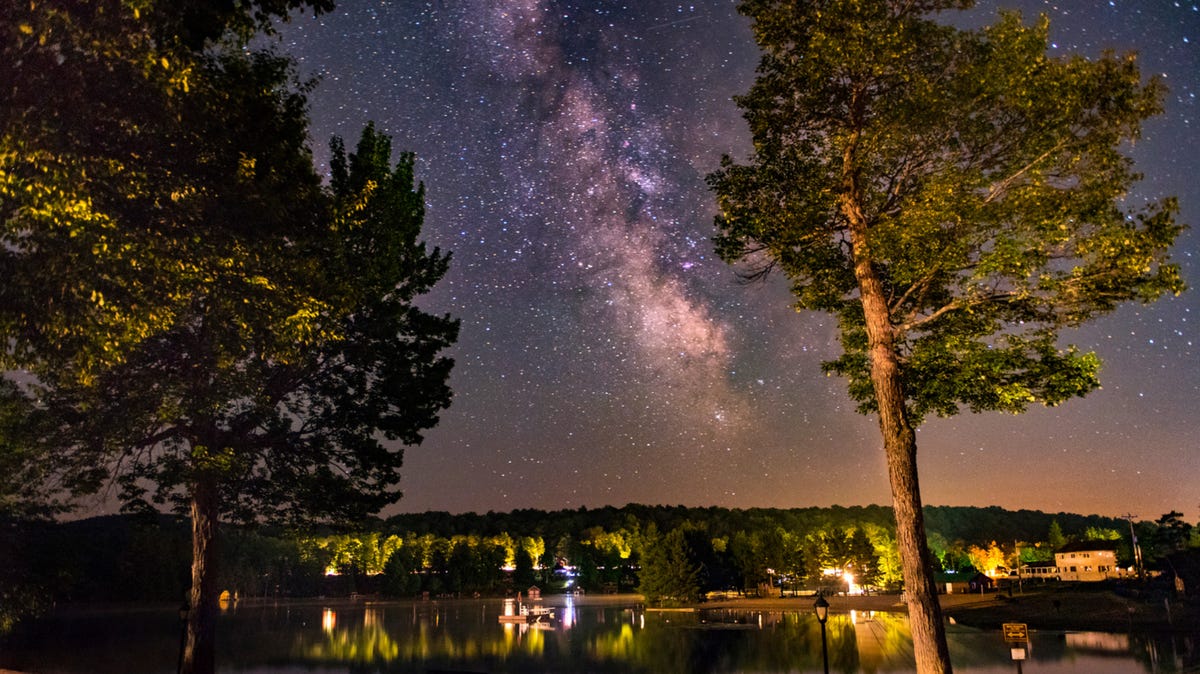The center of our home galaxy, the Milky Way is composed of billions of stars that are expected to be bright and vibrant throughout July, including Independence Day weekend.
Looking for an alternative to fireworks? Stargazers have the opportunity to catch a cosmic light show this Independence Day when the Milky Way appears in the night sky.
The center of our home galaxy, which is composed of billions of stars, is expected to be bright and vibrant throughout the month ahead, including July Fourth weekend. Astronomers say this is perhaps the best time of year to glimpse the iconic band of hazy light known as the Milky Way as it arcs across the sky.
The best part? You don’t need any fancy telescopes or equipment to view it; just your eyes – and maybe a camera, if you’re into astral photography.
Here’s everything to know about our Milky Way, including how to see the stunning natural phenomenon.
What is the Milky Way galaxy?
The Milky Way is our home galaxy with a disc of stars that spans more than 100,000 light-years. Because it appears as a rotating disc curving out from a dense central region, the Milky Way is known as a spiral galaxy.
Our planet is located along one of the galaxy’s spiral arms, about halfway from the center, according to NASA.
The Milky Way sits in a cosmic neighborhood called the Local Group that includes more than 50 other galaxies. Those galaxies can be as small as a dwarf galaxy with up to only a few billion stars, or as large as Andromeda, our nearest large galactic neighbor.
Why is it called the Milky Way?
The Milky Way got its name because from our perspective on Earth, it appears as a faint, milky band of light stretching across the entire sky.
Is the Milky Way visible on Earth? When to see it
While the Milky Way is generally always visible from Earth, certain times of year are better for stargazers to catch a glimpse of the band of billions of stars comprising our galaxy.
“Milky Way season,” when the galaxy’s bright center becomes easier to see from Earth, typically runs from February to October, according to Milky Way photography website Capture the Atlas.
But because visibility from Earth depends on the latitude, the further south you go, the longer the Milky Way season will last. For instance, in the Northern Hemisphere, which includes the entire continental United States, the best time to see the Milky Way is generally from March to September, according to Capture the Atlas.
What you’re looking at when the Milky Way is visible is the bright center of our galaxy, “seen edge-on from our position within the galaxy’s disk,” Preston Dyches, who hosts NASA’s “What’s Up,” a monthly video series that describes what’s happening in the night sky, wrote for NASA.
When to see the Milky Way in July 2025? ‘Blue hour’ and Summer Triangle explained
The center of the Milky Way, which Dyches refers to as “the core,” became visible in June, and is expected to shine every night through August as it gets higher in a darker sky.
Typically, the sky is darkest between sunset and sunrise, or about midnight and 5 a.m., according to Capture the Atlas. You can check the sunrise and sunset times at your location using the website TimeAndDate.
“This doesn’t mean that as soon as the sun goes down, you can see the Milky Way,” writes Dan Zafra, co-founder of Capture the Atlas. “Even if it’s in the sky, the Milky Way will be barely visible during blue hour, so you’ll have to wait at least until the end of the astronomical twilight to see all the details of the Milky Way.”
Stargazers can observe the Milky Way galaxy by looking for the Summer Triangle, a shape formed by “three bright stars” that spans across the Milky Way, according to science news website LiveScience.
In the Northern Hemisphere, the Milky Way rises in the southeast, travels across the southern sky and sets in the southwest, according to Weather.com.
Spectators will have the best luck on cloud-free nights and in locations away from city light pollution – including *ahem* fireworks. DarkSky International maintains a website that lists all designated dark sky communities around the world, including 159 locations in the U.S.
Eric Lagatta is the Space Connect reporter for the USA TODAY Network. Reach him at elagatta@gannett.com.









